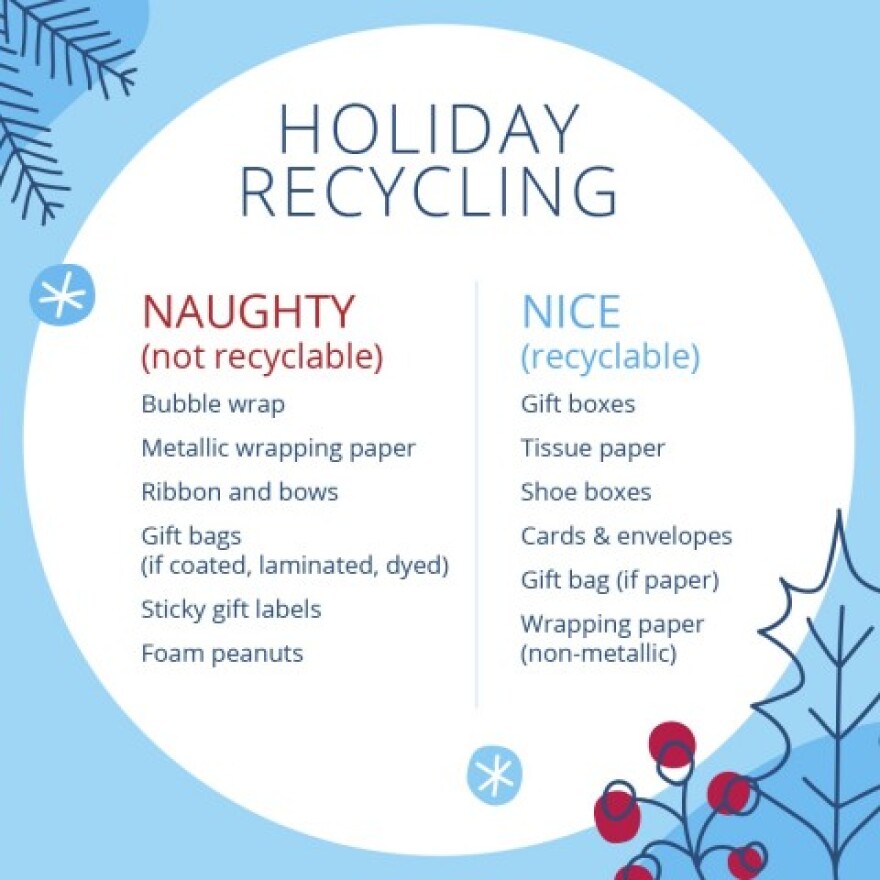With the collective eggnog hangover behind them, people turn their post-holiday attention to pursuits more constructive than … (insert funny over-consumption joke here). For those still in the cleanup phase, Desert Companion asked Republic Services’ Jeremy Walters his advice on reducing their After-Christmas trash factor. Here’s what he had to say.
After the holidays, I always end up with a handful white elephants and other nonreturnable stuff I don’t really want. I tell myself I’ll regift them, but they’re starting to pile up in a cupboard. What’s the most responsible way to get rid of it?
The best way to dispose of unwanted items is to donate them for reuse. If they cannot be repurposed or reused, then you can discard them. If you’re unsure whether the item is recyclable, it’s better to toss it in your regular waste bin, as items that are not recyclable can interrupt or delay the recycling process. In fact, nearly 30 percent of the items that Americans discarded in their recycling bins last year did not belong there.
Okay, so let’s talk about what is recyclable and what isn’t, among all that leftover holiday trash.
Americans generate approximately 25 percent more waste between Thanksgiving through New Year’s Day. That’s about 1,000 pounds of waste per household. We recommend recycling the following:
- Cardboard
- Paper boxes
- Plain wrapping paper and gift bags (no glitter, foil or decorations)
- Holiday cards and envelopes (remove the batteries from electronic cards, e-waste can cause fires)
- Plastic bottles and jugs
- Metal food and beverage cans
Unfortunately, not all holiday items are recyclable. The following should stay out of your curbside recycling containers:
- Decorations, including lights
- Trees – artificial and real
- Ribbons and bows
- Cellophane wrapping
- Fancy gift bags and wrapping paper
- Packing materials: bubble wrap, plastic air pillows, foam sheets and packing peanuts
- Soiled paper napkins, plates, cups — plastic straws and utensils are too small to be recycled and jam the sorting machines
For those who got new electronics, what can they do with the old ones?
New electronics are purchased at a higher rate during the holidays, and old electronics contribute to the skyrocketing amount of e-waste. While electronics and batteries are recyclable, they do not belong in your curbside recycling container. Batteries should never be thrown in the trash, either. Lithium-ion batteries, when compressed in the back of a waste collection truck or by the equipment at a recycling center, can easily be punctured, causing a spark that can quickly ignite a fire. In fact, recycling facilities in the U.S. report an estimated three or four battery related fires per week.
Republic Services actually offers an electronics recycling mail-back program. As for batteries, several chain stores offer free collection boxes for used household batteries. You can also find e-waste drop-off sites near you by browsing websites, such as earth911.com or Call2Recycle.org.
If you could give every Southern Nevadan just one New Year recycling resolution, what would it be?
We recommend that everyone focus on recycling those materials with the most impact. This includes mixed paper, cardboard, metal, aluminum cans, and plastic bottles. Specifically, aluminum is a material that is recycled the least but has the most value, as it can be recycled infinitely and can be back on store shelves within 60 days of recycling.






